Abstract
The current study is a systematic replication and extension of previous research on the differences between specific (mand) and nonspecific (tact) reinforcement. The focus was on the role that these different consequences played in the acquisition of verbal behavior. Using both a within-subject and a between-subjects design, the current researchers trained eight essentially nonverbal individuals to tact a variety of foods under two different reinforcement conditions. The results showed no significant differences between the four matched-pairs in rates of acquisition, or in the resistance to extinction. However, subjects in the specific reinforcement condition emitted more untrained mand-compliance responses, while subjects in the nonspecific group demonstrated increased generalization to multiply controlled mand conditions. The results supported previous findings which indicated that the two types of consequences were equally effective in the acquisition of tacting, but each had unique features and implications for language training with nonverbal populations.
Full text
PDF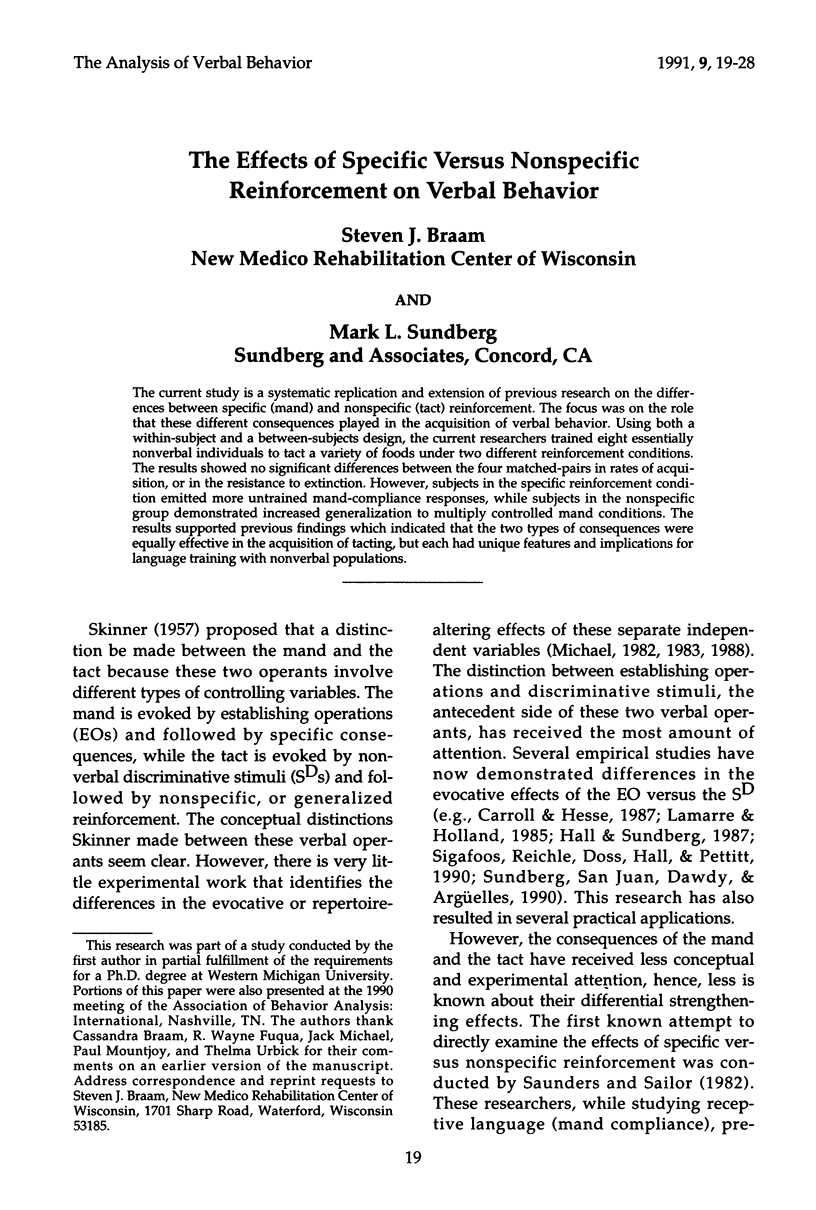
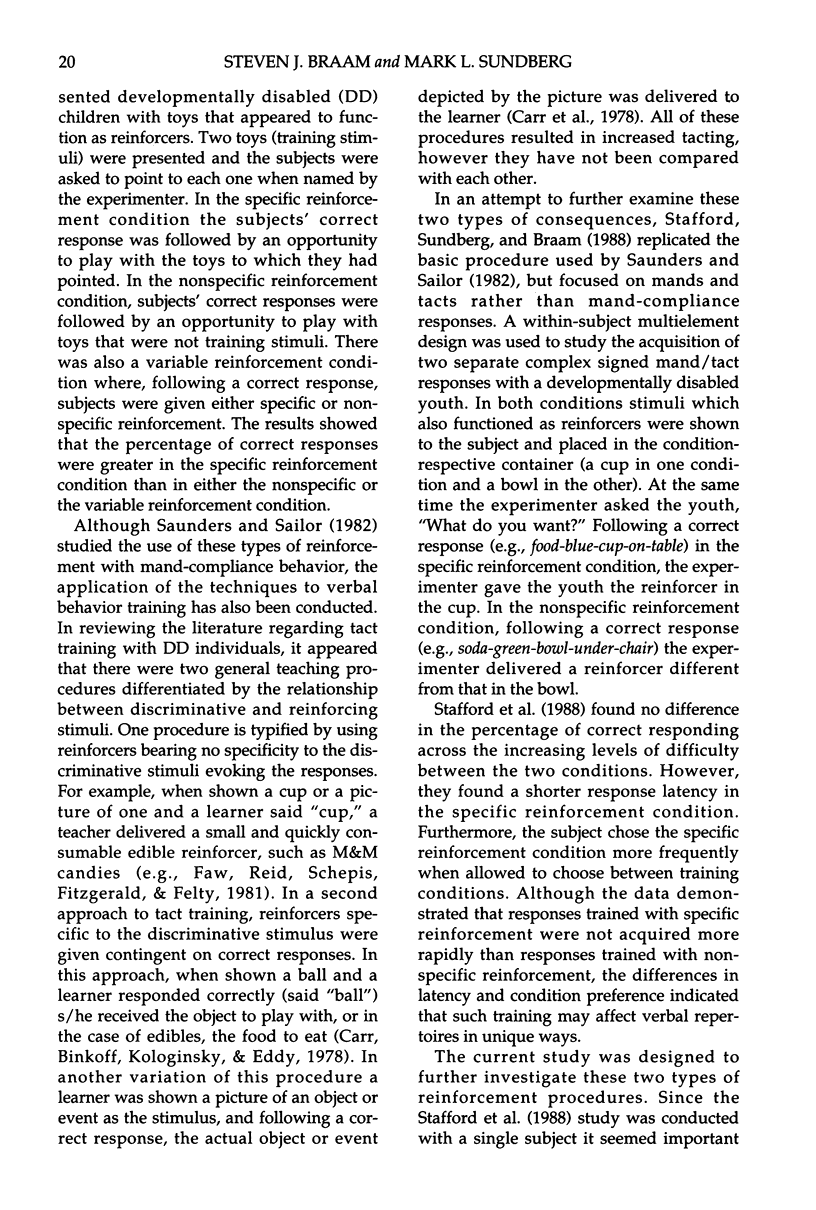
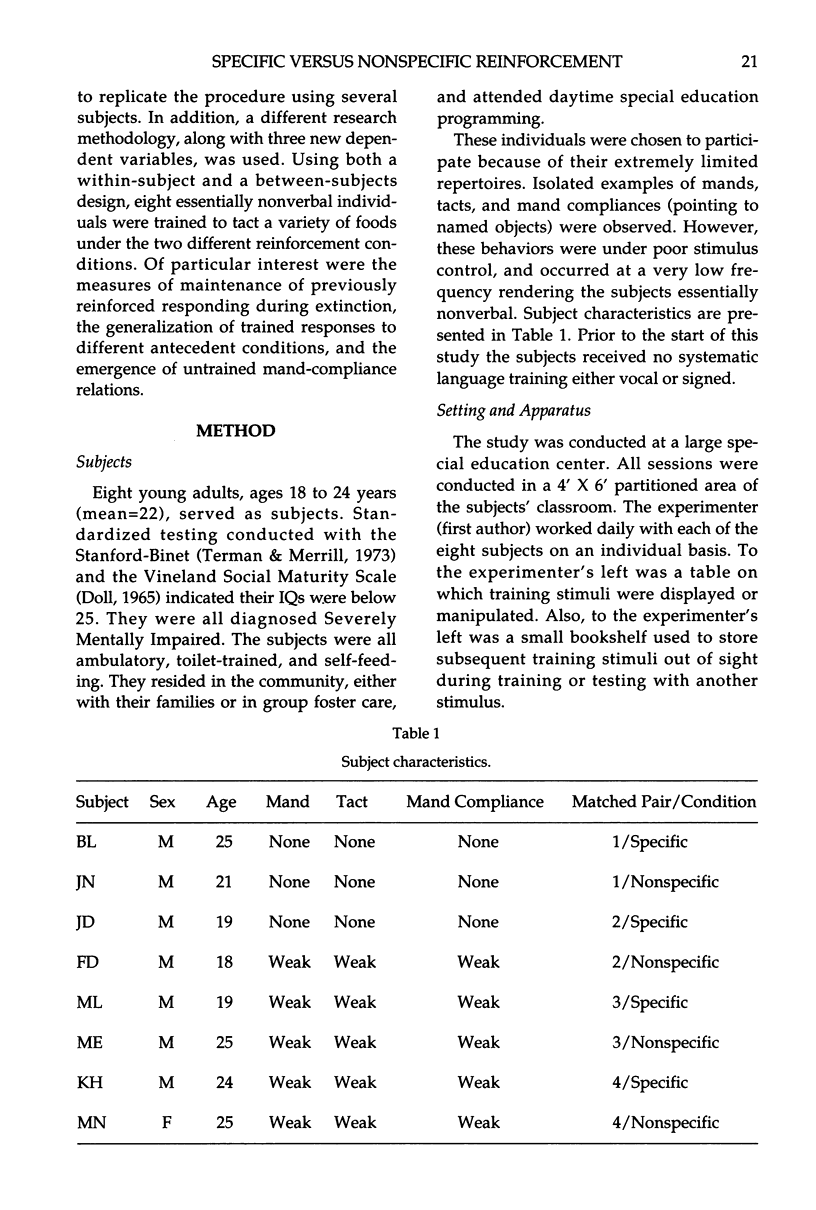
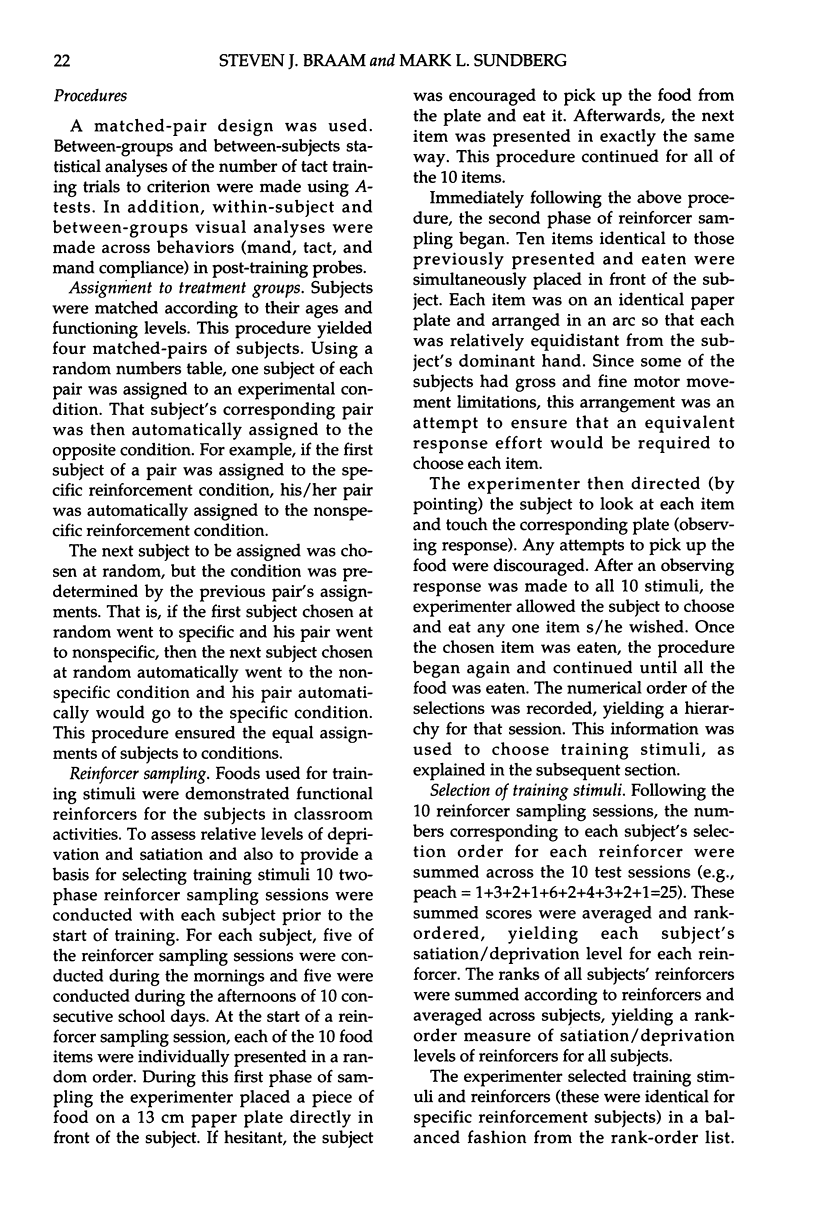
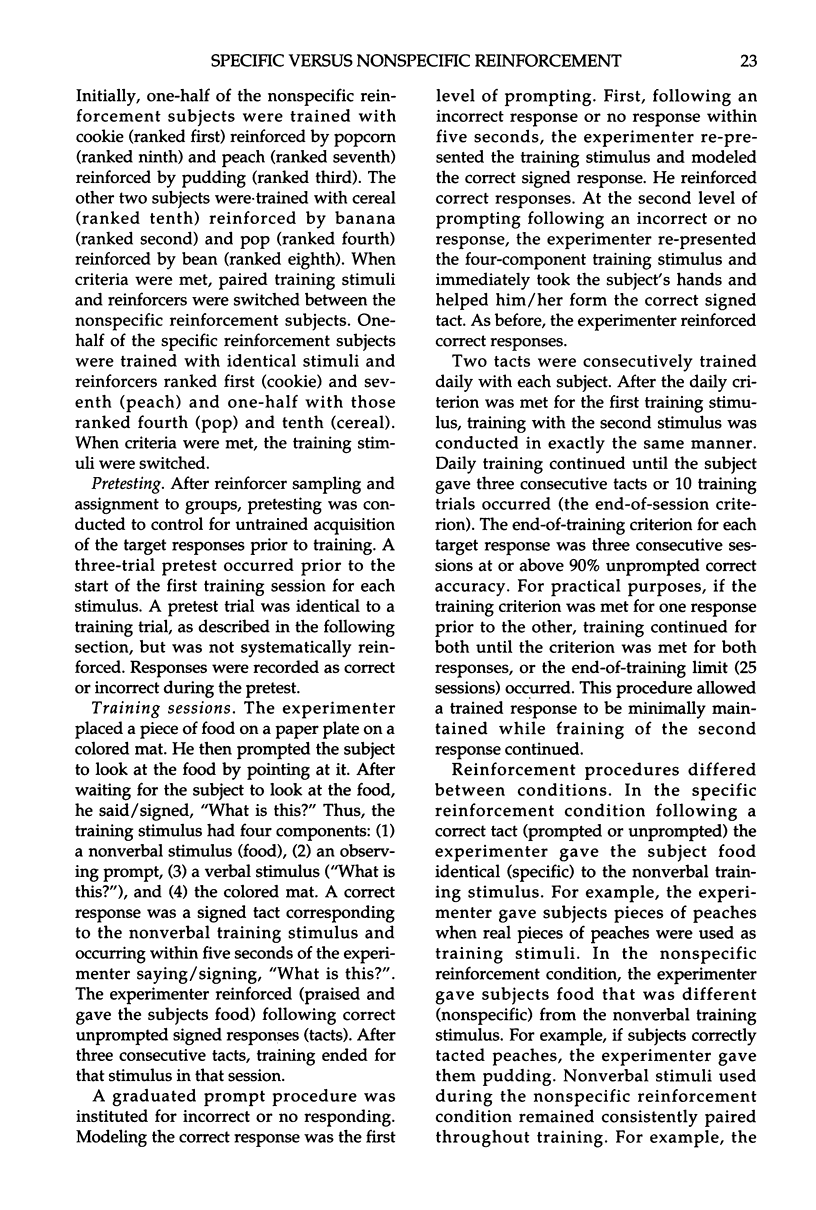
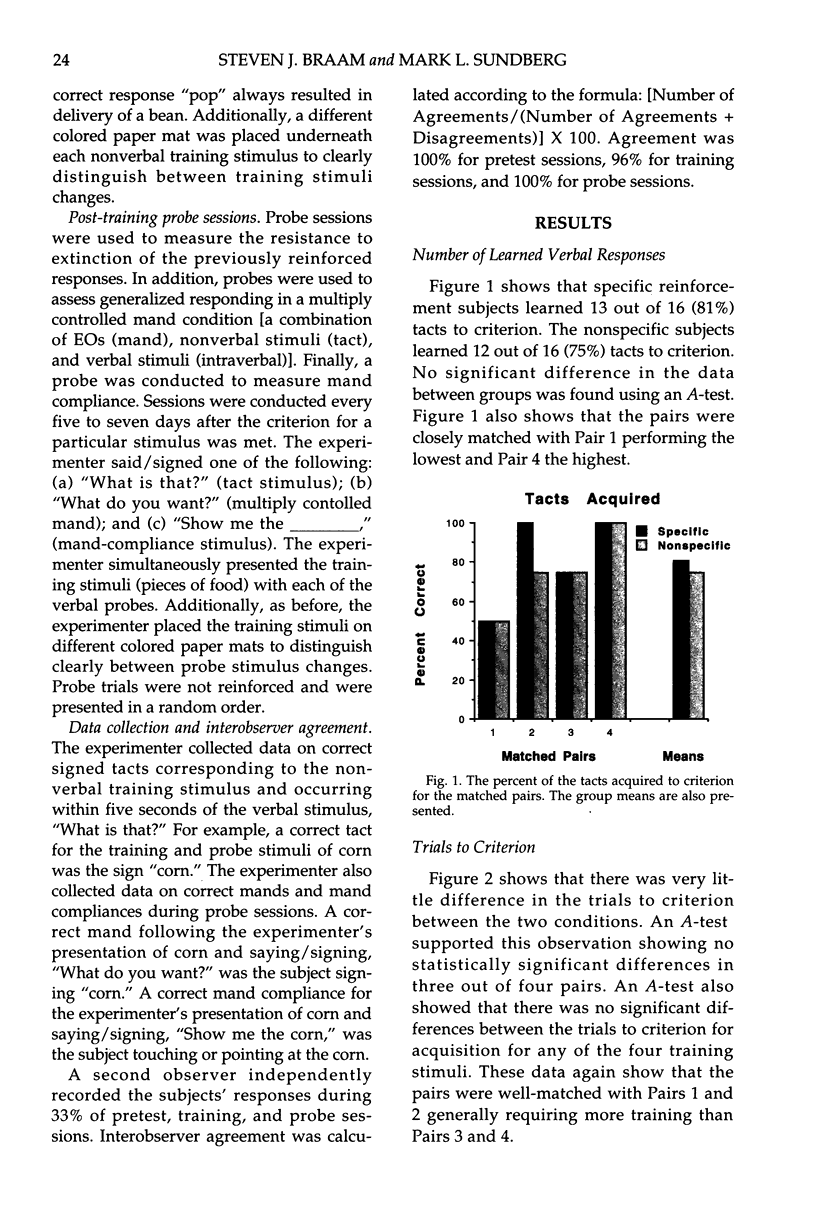
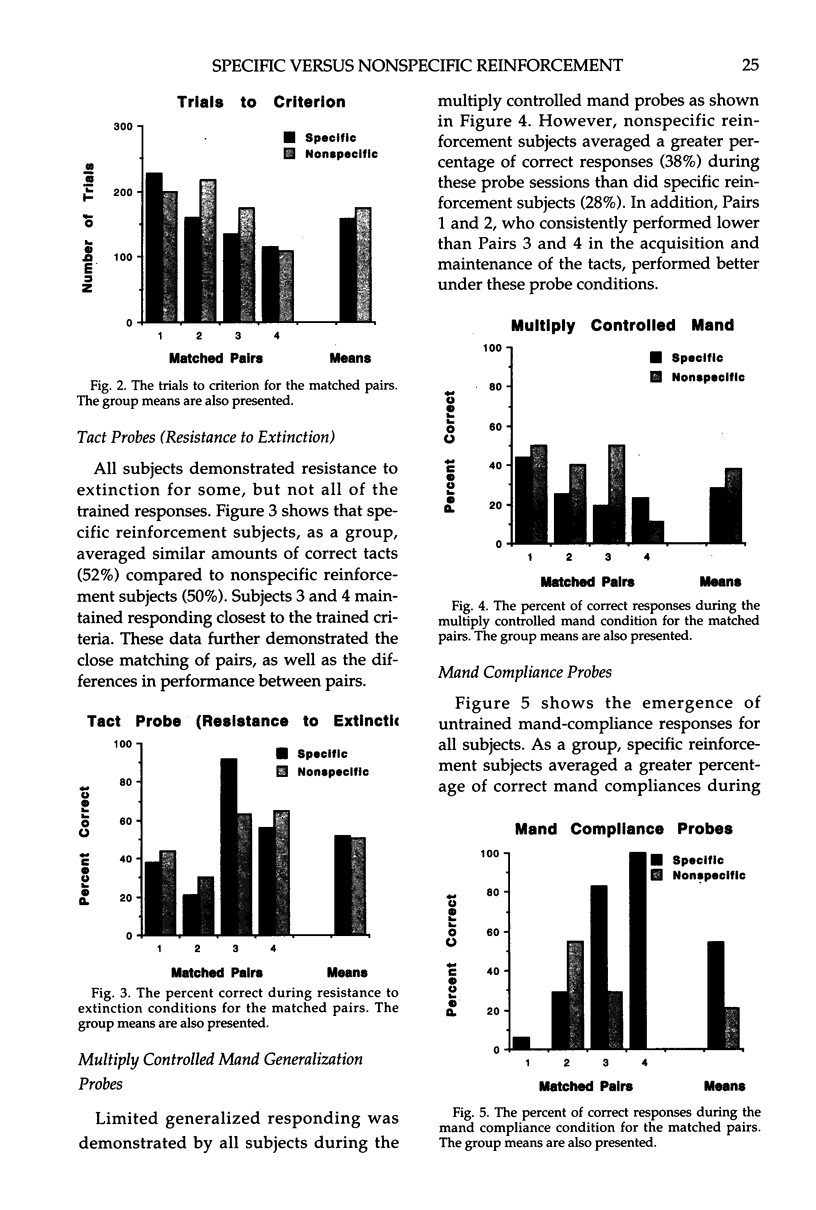
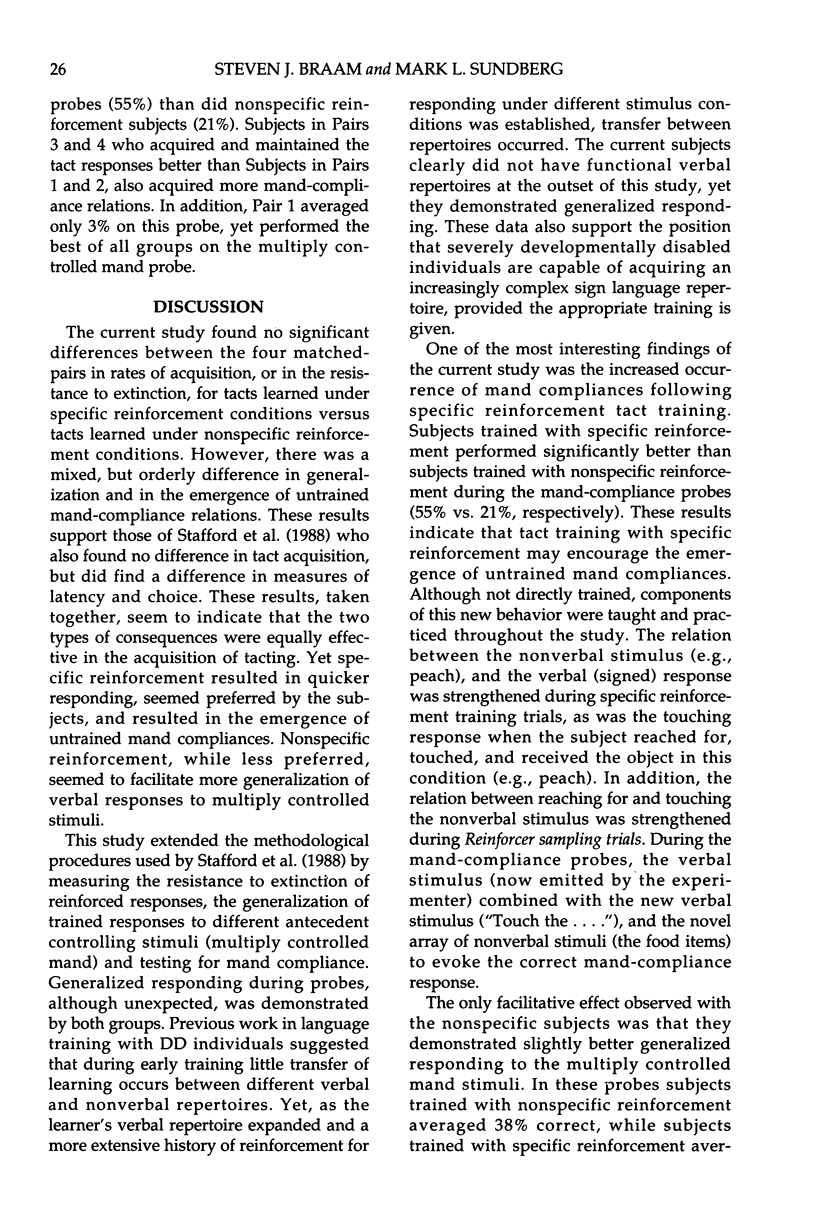
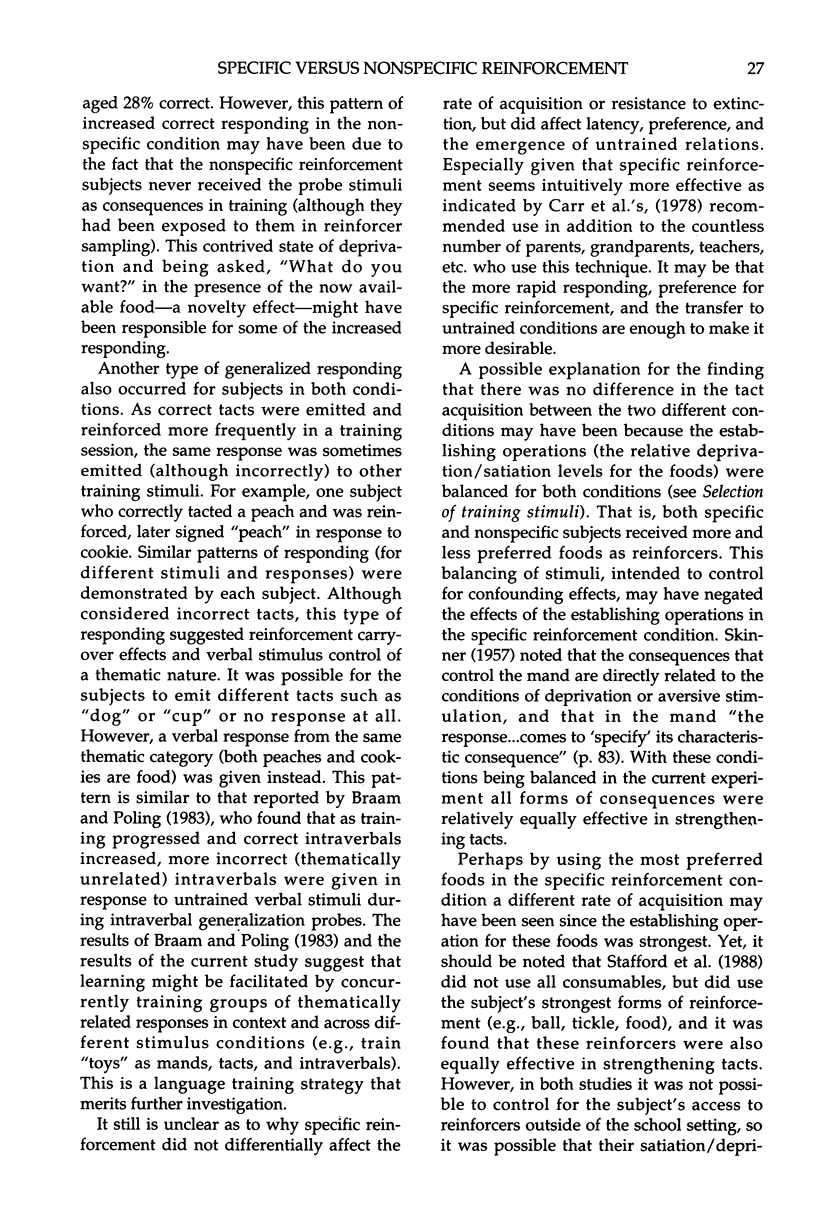
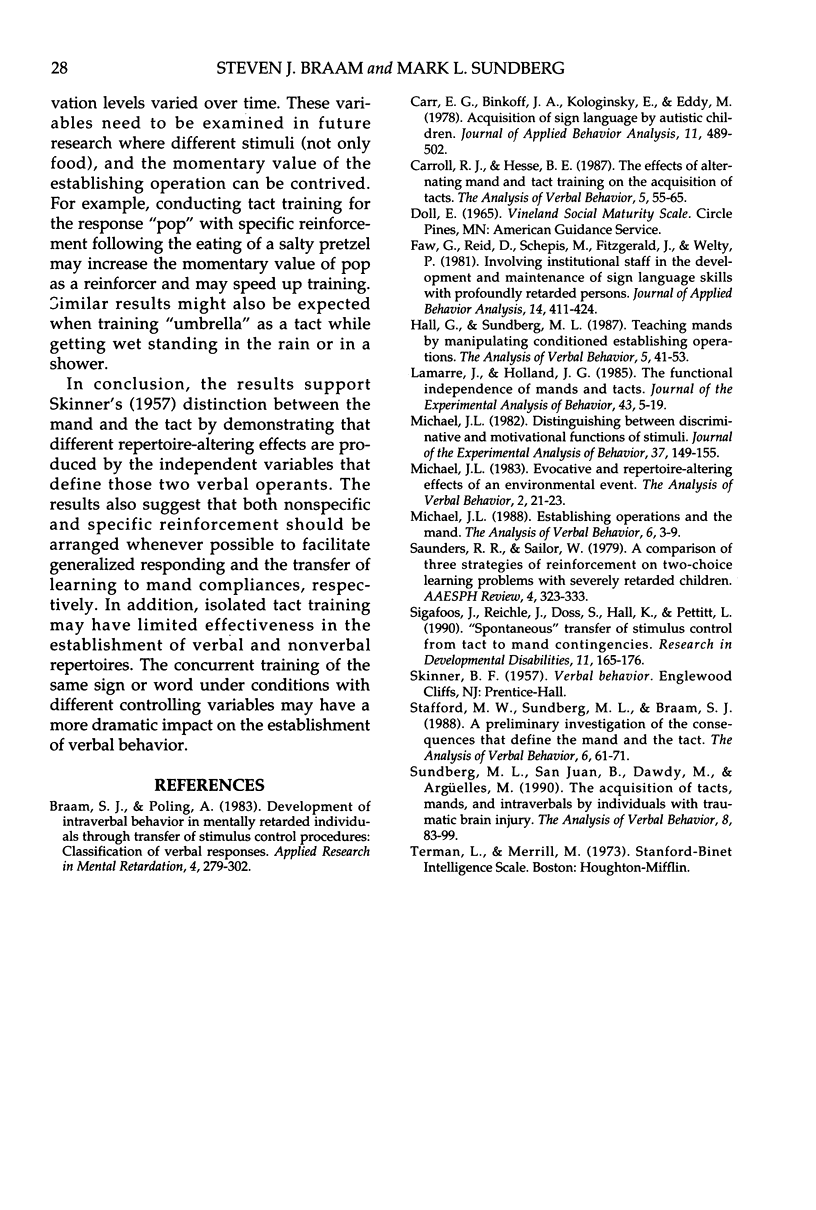
Images in this article
Selected References
These references are in PubMed. This may not be the complete list of references from this article.
- Braam S. J., Poling A. Development of intraverbal behavior in mentally retarded individuals through transfer of stimulus control procedures: classification of verbal responses. Appl Res Ment Retard. 1983;4(4):279–302. doi: 10.1016/0270-3092(83)90030-9. [DOI] [PubMed] [Google Scholar]
- Carr E. G., Binkoff J. A., Kologinsky E., Eddy M. Acquisition of sign language by autistic children. I: Expressive labelling. J Appl Behav Anal. 1978 Winter;11(4):489–501. doi: 10.1901/jaba.1978.11-489. [DOI] [PMC free article] [PubMed] [Google Scholar]
- Faw G. D., Reid D. H., Schepis M. M., Fitzgerald J. R., Welty P. A. Involving institutional staff in the development and maintenance of sign language skills with profoundly retarded persons. J Appl Behav Anal. 1981 Winter;14(4):411–423. doi: 10.1901/jaba.1981.14-411. [DOI] [PMC free article] [PubMed] [Google Scholar]
- Lamarre J., Holland J. G. The functional independence of mands and tacts. J Exp Anal Behav. 1985 Jan;43(1):5–19. doi: 10.1901/jeab.1985.43-5. [DOI] [PMC free article] [PubMed] [Google Scholar]
- Michael J. Distinguishing between discriminative and motivational functions of stimuli. J Exp Anal Behav. 1982 Jan;37(1):149–155. doi: 10.1901/jeab.1982.37-149. [DOI] [PMC free article] [PubMed] [Google Scholar]
- Sigafoos J., Reichle J., Doss S., Hall K., Pettitt L. "Spontaneous" transfer of stimulus control from tact to mand contingencies. Res Dev Disabil. 1990;11(2):165–176. doi: 10.1016/0891-4222(90)90033-5. [DOI] [PubMed] [Google Scholar]
- Terblanche J., Northover J. M., Bornman P., Kahn D., Silber W., Barbezat G. O., Sellars S., Campbell J. A., Saunders S. J. A prospective controlled trial of sclerotherapy in the long term management of patients after esophageal variceal bleeding. Surg Gynecol Obstet. 1979 Mar;148(3):323–333. [PubMed] [Google Scholar]







